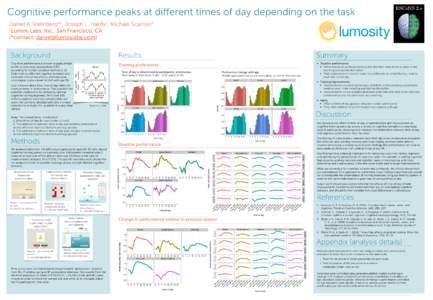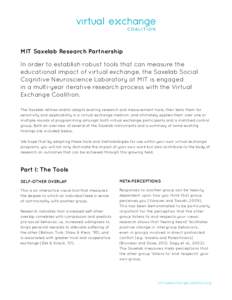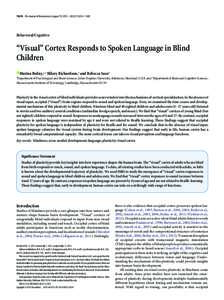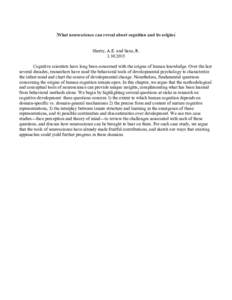<--- Back to Details
| First Page | Document Content | |
|---|---|---|
 Date: 2014-08-01 17:02:48Sleep Neuroscience Cognitive science Memory Spatial memory Circadian rhythm O RLY? Working memory G factor Mind Ethology Knowledge |
Add to Reading List |
 | MIT Saxelab Research Partnership In order to establish robust tools that can measure the educational impact of virtual exchange, the Saxelab Social Cognitive Neuroscience Laboratory at MIT is engaged in a multi-year iterDocID: 1xUyJ - View Document |
 | 11674 • The Journal of Neuroscience, August 19, 2015 • 35(33):11674 –Behavioral/Cognitive “Visual” Cortex Responds to Spoken Language in Blind ChildrenDocID: 1xUnf - View Document |
 | What neuroscience can reveal about cognition and its origins Skerry, A.E. and Saxe, RCognitive scientists have long been concerned with the origins of human knowledge. Over the last several decades, researcheDocID: 1xT6i - View Document |
PDF DocumentDocID: 1xS2j - View Document | |
PDF DocumentDocID: 1xN0A - View Document |
 view that the clock has a singular role in cognition: that of controlling the timing of sleep. Once it has established an appropriate sleeping pattern, the clock falls out of the equation and all that matters for cogniti
view that the clock has a singular role in cognition: that of controlling the timing of sleep. Once it has established an appropriate sleeping pattern, the clock falls out of the equation and all that matters for cogniti